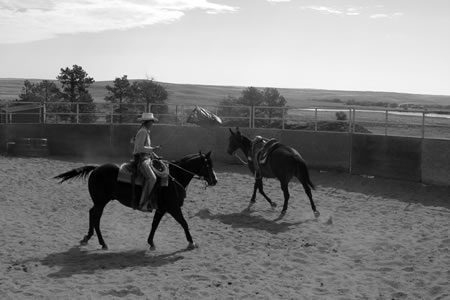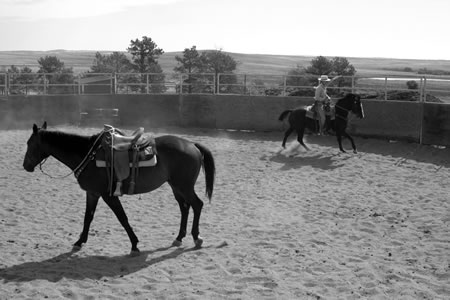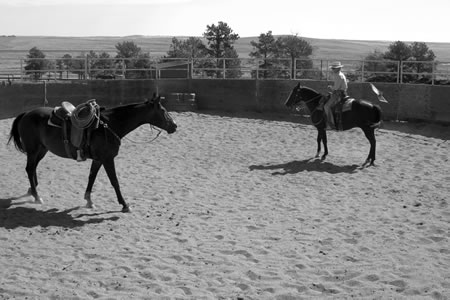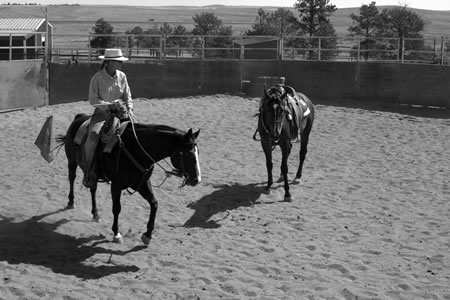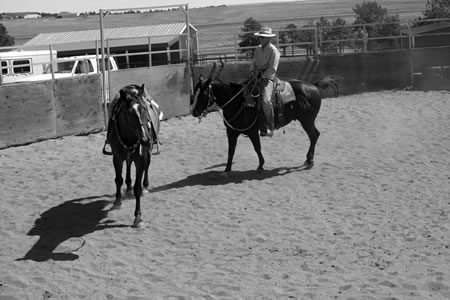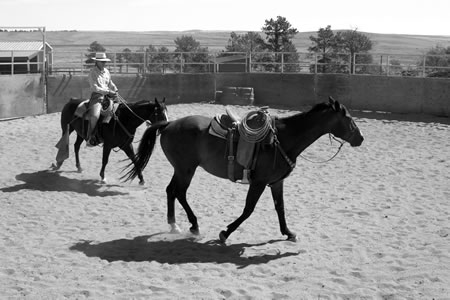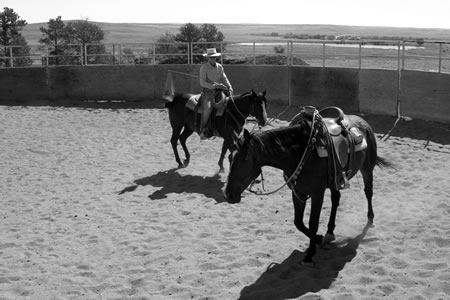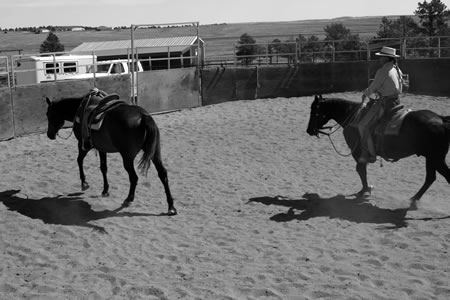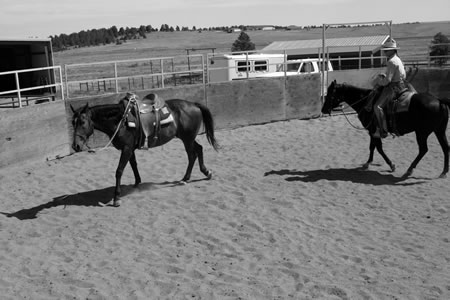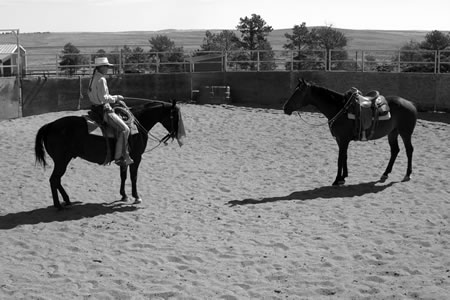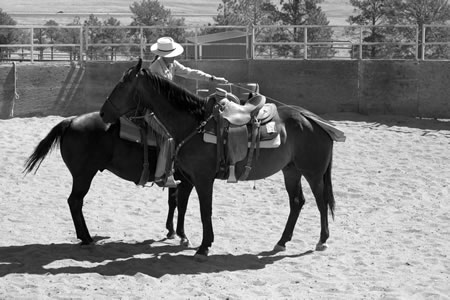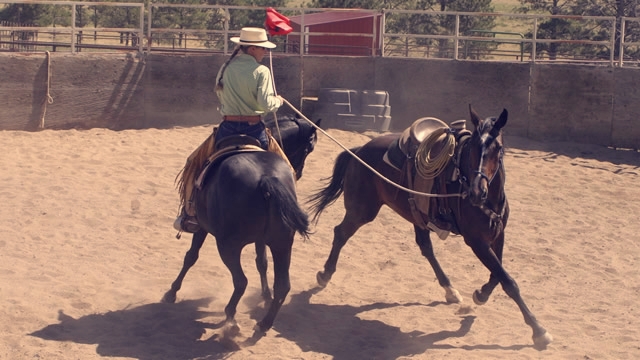With Mindy Bower
If you are creative, you can find ways to prepare you and your horse for demanding jobs, such as roping, where there are many variables to keep track of, by simulating complicated situations. If riding in one hand, and if roping or any other aspect of making a bridle horse is part of your goals, working another horse from horseback is a great exercise to build handiness and to learn to how to shift your attention back and forth between your saddle horse and the horse you’re working.

I had a great project this summer with these two horses. Randy, a very troubled four-year-old Warmblood gelding and Shadow, a nine-year-old Quarter Horse gelding who was very green-broke. Randy was extremely afraid of the flag and very out of balance left to right. Shadow was just heavy on his front-end and very hard to get into and keep at the canter, especially to the left. So I set out to work on both problems at the same time in the round pen with the flag.
First I just wanted to get Randy going around evenly at the walk, trot and canter both ways, and to have Shadow move in a small circle in the middle of Randy’s big circle. I could use the flag to both move Randy out and to move Shadow in. In other words, to move Shadow’s front-end around more than his hind.
Once this was accomplished, I could trade places and ride Shadow out to the big circle and push Randy to the middle on the little circle. Depending on what I think needed to be done at the moment, I could ask Randy to move either his hind-end around or his front-end depending on whether I was drawing on the inside eye or pushing on the outside eye.
My goal was to be able to do both just to build more mental flexibility in him. He was so used to using one side and moving one way, it was obvious why he was in trouble. (His right side was hollow and his left side stiff.)
In the mean time, I had moved Shadow up to the canter and worked on maintaining his gait. I could immediately take the pressure off Randy by just concentrating on Shadow and ignoring Randy. Then when things shaped up, I’d bring Shadow back to the center of the round pen and pushed Randy back out onto the big circle.

My next project was to Randy to do a figure eight in the round pen, by getting him to hook on enough to come across the pen. Then I could push on his eye and send him in the new direction.
At the same time I’m working on Shadow tracking Randy and making nice transitions. It made me very aware of whether Shadow was staying between my reins. If not, I could easily use the flag to push on his eye and get him centered.
My final objective was to be able to touch Randy with the flag. I had already tried to remedy this with me on foot, but he was too scared, and it wasn’t going to happen anytime soon. Horseback was a different story. If you find yourself in a situation like that, remember that you can use your saddle horse to build confidence in a horse that is very afraid.
Once I touched him with the flag and he accepted it, I took his halter rope off the horn and worked on building the feel that had been covered up by all that fear. Once again, you can use the flag to support movement in both horses.
I would suggest a project such as this to help improve your own skills. It’s a lot to keep track of, without the level of risk that there is in roping. So be creative, and set up jobs to prepare you and your horse for more challenging tasks.
